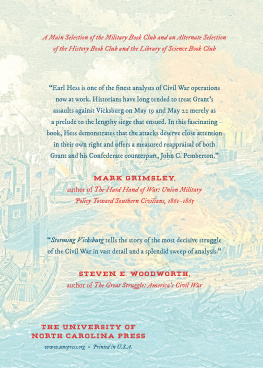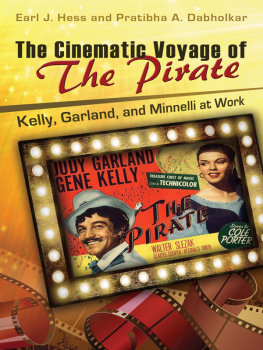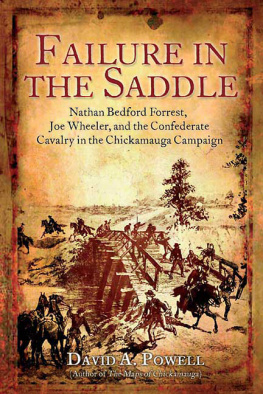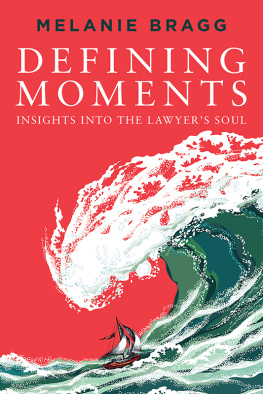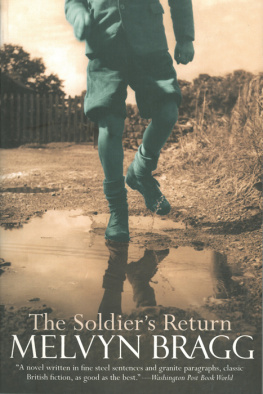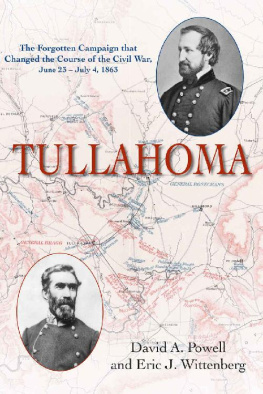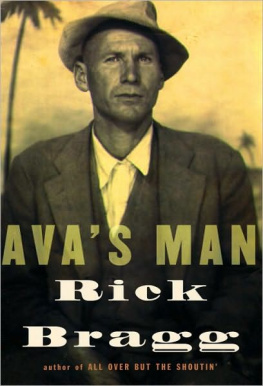Contents
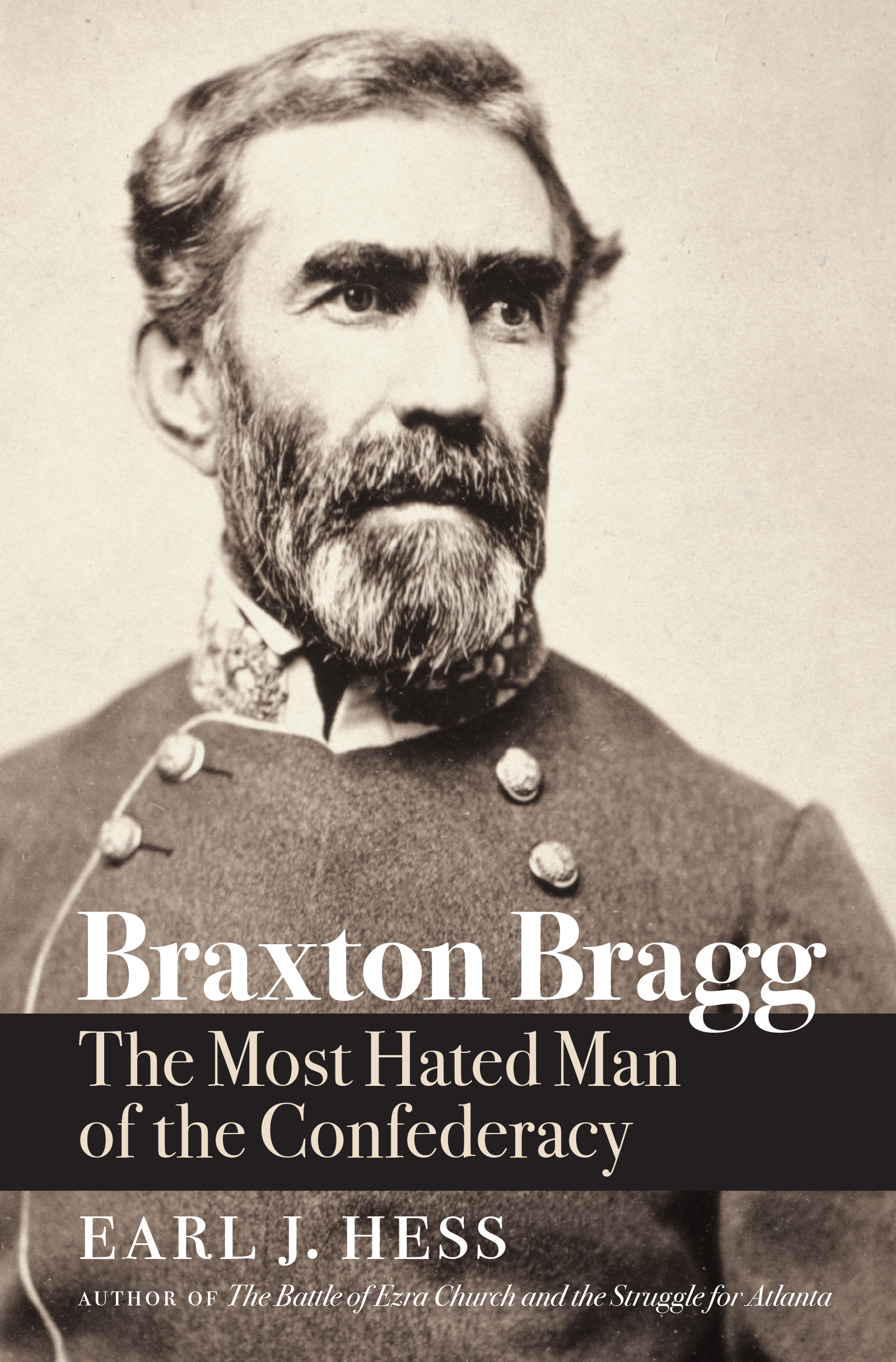
Braxton Bragg
Civil War America
Peter S. Carmichael, Caroline E. Janney, and Aaron Sheehan-Dean, editors
This landmark series interprets broadly the history and culture of the Civil War era through the long nineteenth century and beyond. Drawing on diverse approaches and methods, the series publishes historical works that explore all aspects of the war, biographies of leading commanders, and tactical and campaign studies, along with select editions of primary sources. Together, these books shed new light on an era that remains central to our understanding of American and world history.
This book was published with the assistance of the Fred W. Morrison Fund of the University of North Carolina Press.
2016 Earl J. Hess
All rights reserved
Manufactured in the United States of America. Designed and set in Merlo by Rebecca Evans. The paper in this book meets the guidelines for permanence and durability of the Committee on Production Guidelines for Book Longevity of the Council on Library Resources. The University of North Carolina Press has been a member of the Green Press Initiative since 2003.
Cover illustration: Braxton Bragg (Library of Congress, LC-USZC 4-7984)
Library of Congress Cataloging-in-Publication Data
Names: Hess, Earl J., author.
Title: Braxton Bragg : the most hated man of the Confederacy / Earl J. Hess.
Other titles: Civil War America (Series)
Description: Chapel Hill : The University of North Carolina Press, [2016] |
Series: Civil War America | Includes bibliographical references and index.
Identifiers: LCCN 2015049262| ISBN 9781469628752 (cloth : alk. paper) |
ISBN 9781469628769 (ebook)
Subjects: LCSH: Bragg, Braxton, 1817-1876. | GeneralsConfederate States of
AmericaBiography. | Confederate States of America. ArmyBiography. |
United StatesHistoryCivil War, 1861-1865.
Classification: LCC E 467.1. B 75 H 47 2016 | DDC 355.0092dc23 LC record
available at http://lccn.loc.gov/2015049262
An earlier version of chapter 7 was published as Braxton Bragg and the Stones River Campaign, in Kent T. Dollar, Larry H. Whiteaker, and W. Calvin Dickinson, eds., Border Wars: The Civil War in Tennessee and Kentucky (Kent, Ohio: Kent State University Press, 2015). 2015 by the Kent State University Press. Reprinted by permission.
For Pratibha, with love
Contents
Figures and Maps
Figures
Thomas Bragg Sr.,
Elise Bragg,
Sugar Plantation along Bayou La Fourche,
Braxton Bragg in civilian clothes,
Braxton Bragg in Louisiana State uniform,
Braxton Bragg in Frank Leslies Illustrated,
Braxton Bragg as a Confederate general,
Jefferson Davis,
P. G. T. Beauregard,
James R. Chalmers,
Leonidas Polk,
William J. Hardee,
Edmund Kirby Smith,
Thomas Bragg Jr.,
Joseph Wheeler,
Joseph E. Johnston,
William Preston,
John C. Breckinridge,
Benjamin F. Cheatham,
Braxton Bragg,
Simon B. Buckner,
Nathan Bedford Forrest,
James Longstreet,
John Bragg,
John Bell Hood,
Jefferson Davis after the Civil War,
Braxton Bragg at Paint Rock,
Another View of Bragg at Paint Rock,
Maps
Braggs Civil War,
Area around Chattanooga,
Preface
Braxton Bragg has always been a controversial figure of the Civil War. His contemporaries began the process of making him into a hero, a fool, a bloodthirsty disciplinarian, and an old-fashioned scapegoat, all wrapped up in one package. Historians have tended to do similar things, followed by a legion of Civil War enthusiasts who seem to delight in making of Bragg the Confederacys chief whipping boy.
It is not easy to gain a proper perspective on Bragg because of these kaleidoscopic views of his personality and generalship. His image has been warped and tainted by them. One need only mention his name at a Civil War round table meeting to bring a guffaw from someone who will make a snide comment about the general. Nearly everyone has a negative view of Bragg, and yet he remains one of the most popular figures of the Civil War. Even those who think poorly of his war career are fascinated by it, and almost any group of Civil War students or historians will engage in a heated discussion about his impact on the course of the conflict.
This book is an effort to understand many things about Bragg the man and the Civil War general. To understand the man, it delves into his personality, his family life, and his views of Southern culture when slavery was at its height and most of the South fought a desperate war for independence. Bragg fully embraced that war because he had come to embrace the plantation culture that he thought was at the heart of the Southern independence movement. Braggs career as a Confederate general is probed deeply, including the many controversies surrounding his handling of Confederate troops in the field. The connections between Braggs personal life and his military career are explored as well. The deep and intense controversies about his generalship unfortunately have had the effect of dehumanizing Bragg. He has become almost a cardboard figure among Civil War enthusiasts and even among some professional historians.
This book is a study of Braxton Braggs Civil War career, not a full-fledged biography of the man. It also is not simply a generic narrative of the campaigns and battles he conducted, a fault of too many histories of prominent figures in the conflict. How Bragg handled his army in the field is important, but the reaction of a myriad of people to his success or failure as a general is even more important in this study. His immediate colleagues, his chief subordinates, and the middle-ranking officers and privates in his command all had differing opinions of their general. Men and women in the civilian society of the South had their views, and prominent politicians in Richmond also formed their assessments of Bragg. Even his Federal opponents weighed in with evaluations of their gray-clad adversary.
Digging deeply into all these opinions and weighing their significance on Braggs ability to command are important objectives of this work. But it is also important to understand how these opinions affected Bragg the man as well as the general. Historians have tended to see Bragg as the actor in creating a circle of negativity around him, but we also must understand that he was in turn deeply affected by the actions and opinions of others.
Setting Bragg within his proper context is another important objective of this book. Comparing his Civil War career with that of other generals, especially Robert E. Lee, helps us to understand whether he really deserves to be blamed for causing Confederate defeat. In other words, did the problems inhibiting Braggs ability to win campaigns and battles stem mostly from his own failings or from a set of strategic problems encountered by all other Rebel generals? Could Lee have done better if plucked from the Army of Northern Virginia and planted in the Army of Tennessee? How did Braggs generalship at Stones River compare to that of Lee at Chancellorsville? Comparison and context always enlighten historical questions in one way or another.
We must also consider Bragg the family manthe husband and domestic provider. His wife Elise was the primary emotional support of his life. Bragg certainly possessed the ability to make and keep male friends, but no one came close to sustaining him in an emotional way as did Elise. Understanding these personal relationships helps us to humanize Bragg, turning him from a cardboard figure into a real person with admirable personal qualities as well as distressing personal faults.


